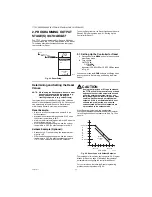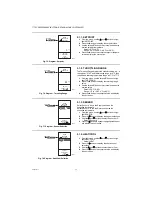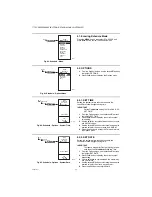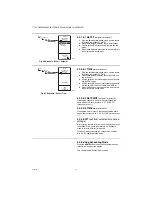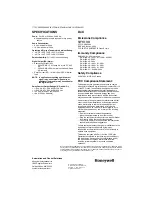
T775P SERIES 2000 ELECTRONIC STAND-ALONE CONTROLLER
Automation and Control Solutions
Honeywell International Inc.
1985 Douglas Drive North
Golden Valley, MN 55422
customer.honeywell.com
® U.S. Registered Trademark
© 2014 Honeywell International Inc.
62-0256—11 M.S. Rev. 04-14
Printed in United States
SPECIFICATIONS
Power:
24, 120, or 240 Vac; 50/60 Hz;
A separate earth ground is required for any power
source
Power Consumption:
• 8 VA maximum at 60 Hz
• 10 VA maximum at 50 Hz
Operating & Storage Temperature Ambient Rating:
• -40°F to 125°F (-40°C to 52°C) @ 50 Hz
• -40°F to 140°F (-40°C to 60°C) @ 60 Hz
Relative Humidity:
5% to 95% non-condensing
Digital Output (DO) Alarm:
• Alternating Current (AC):
— 30 Vac RMS; 1.5 A steady 3 A inrush P.F. 0.45
NC
— 20 Vac RMS; 100 mA minimum load on NO and
NC contacts
• Direct Current (DC): 1 mA at 100 mV DC minimum
load
NOTE: In applications requiring a gold contact
signal relay, an external signal relay or
additional load resistor may be needed for
the digital output.
Relay Contact Output Ratings (N.O. and N.C.):
• 1/2 hp; 9.8 AFL, 58.8 ALR @ 120 Vac
• 1/2 hp; 4.9 AFL, 29.4 ALR @ 240 Vac
• 125 VA pilot duty @ 120/240 Vac
• 10A @ 24 Vac (resistive)
DoC
Emissions Compliance
EN 55022: 2006
CISPR 22: 2006
VCCI V-3/2006.04
ICES-003, Issue 4: 2004
FCC PART 15 SUBPART B Class B Limit
Immunity Compliance
EN 61000-6-1: 2001 covering
EN 61000-4-2: 1995 + A1: 1998 + A2: 2001
EN 61000-4-3: 2002
EN 61000-4-4: 2004
EN 61000-4-5: 1995 + A1: 2001
EN 61000-4-6: 1996 + A1: 2001
EN 61000-4-8: 1993 + A1: 2001
EN 61000-4-11 2nd Ed.: 2004
Safety Compliance
UL 60730-1 for US and Canada
FCC Compliance Statement:
This equipment has been tested and found to comply
with limits for a Class B digital device, pursuant to Part 15
of the FCC rules. These limits are designed to provide
reasonable protection against harmful interference in
residential installations. This equipment generates, uses,
and can radiate radio frequency energy, and if not
installed and used in accordance with the instructions,
may cause harmful interference to radio communications.
However, there is no guarantee that interference will not
occur in a particular installation. If this equipment does
cause interference to radio or television equipment
reception, which can be determined by turning the
equipment off and on, the user is encouraged to try to
correct the interference by one or more of the following
measures:
— Reorient or relocate the receiving antenna
— Move the equipment away from the receiver
— Plug the equipment into an outlet on a circuit different
from that to which the receiver is connected
— Consult the dealer or an experienced radio/television
technician for additional suggestions
You are cautioned that any change or modifications to the
equipment not expressly approve by the party
responsible for compliance could void Your authority to
operate such equipment.
This device complies with Part 15 of the FCC Rules.
Operation is subjected to the following two conditions 1)
this device may not cause harmful interference and 2)
this device must accept any interference received,
including interference that may cause undesired
operation.
By using this Honeywell literature, you agree that Honeywell will have no liability for any damages arising
out of your use or modification to, the literature. You will defend and indemnify Honeywell, its affiliates
and subsidiaries, from and against any liability, cost, or damages, including attorneys’ fees, arising out of,
or resulting from, any modification to the literature by you.





